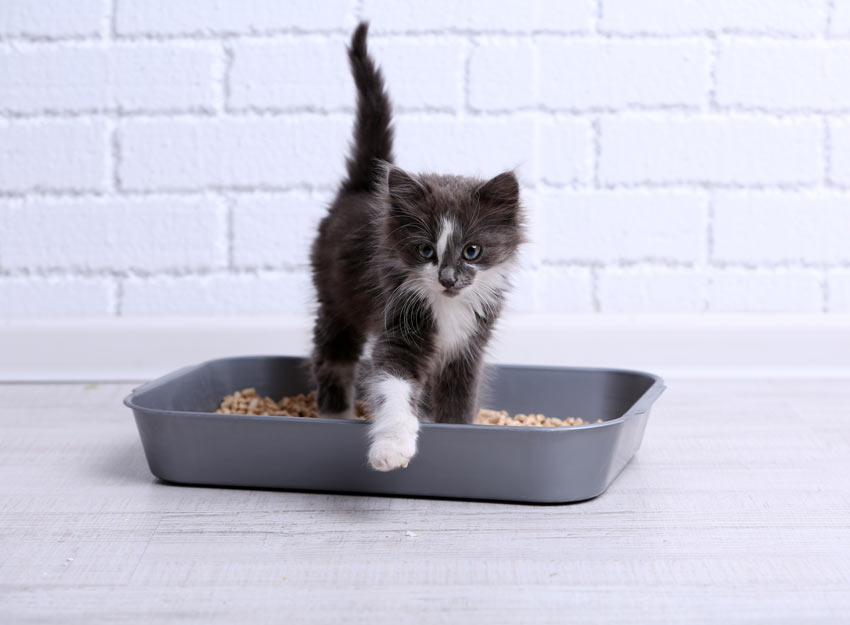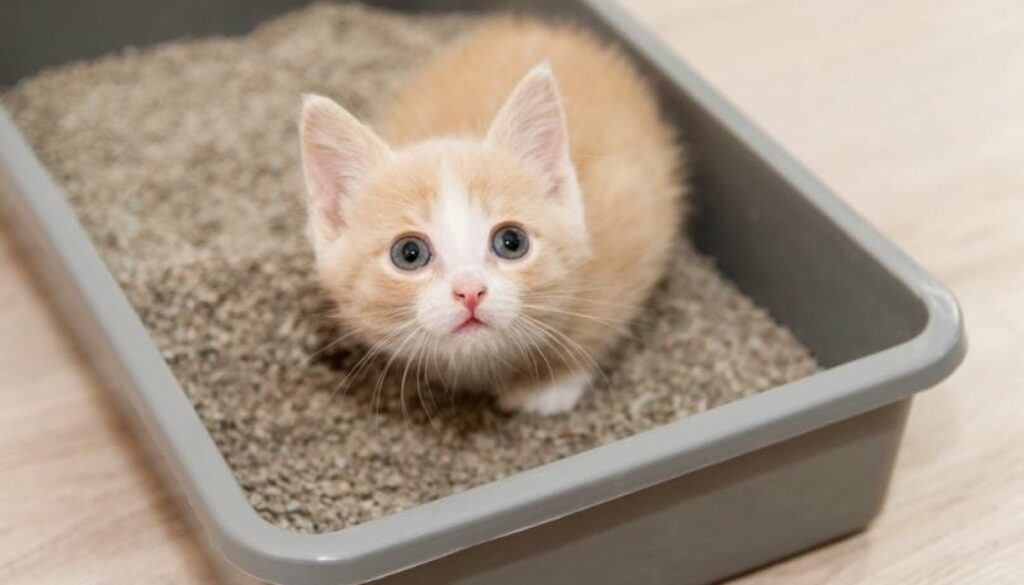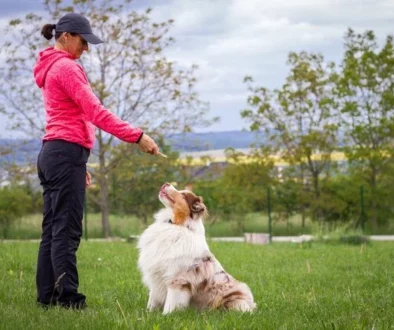The Dos and Don’ts of Litter Box Training for Kittens
Litter box training is a vital aspect of caring for a new kitten, ensuring their hygiene and comfort while instilling proper bathroom habits. However, it can also be a challenging process for both the kitten and their owner. In this article, we will guide you through the dos and don’ts of litter box training for kittens, providing you with the necessary knowledge and techniques to make the training successful.
Bringing a new kitten into your home is an exciting time, but it comes with the responsibility of teaching them where to do their business. Litter box training is essential not only for maintaining cleanliness in your household but also for the overall well-being of your feline friend. Proper training prevents accidents, reduces behavioral issues, and strengthens the bond between you and your kitten.

The Importance of Litter Box Training for Kittens
Litter box training plays a crucial role in establishing good habits early on. Cats are naturally inclined to bury their waste, and training them to use a litter box satisfies their instinctual needs. It also prevents them from eliminating in appropriate places, saving your carpets and furniture from potential damage.
Preparation before Litter Box Training
Before starting the training process, it is essential to prepare the environment and gather the necessary supplies. Set up a dedicated area for the litter box, away from their food and sleeping area. Gather litter box essentials such as a litter box, litter scoop, odor-neutralizing litter, and possibly litter box liners for easier cleaning.
Choosing the Right Litter Box
Selecting the appropriate litter box is pivotal for successful training. Consider a box with low sides, making it easily accessible for a young kitten. The size should be comfortable for them to turn around and move freely inside. If you have multiple kittens, ensure there are enough litter boxes to avoid competition and conflicts.
Selecting the Appropriate Litter
Choosing the right litter is equally important. Opt for a non-clumping, unscented litter for young kittens as they tend to ingest litter while grooming themselves. Scented litter may deter them from using the litter box. Gradually transitioning to clumping litter can be done as they grow older.
Placement of the Litter Box
Proper placement of the litter box is crucial. Choose a quiet and easily accessible location for your kitten. Avoid placing it in high-traffic areas or near loud appliances that may scare them. Ensure the litter box is placed on a stable surface, providing stability during use.
Introducing the Kitten to the Litter Box
Gently introduce your kitten to the litter box by placing them inside after meals or naps. Allow them to explore and sniff around. If they begin to dig or eliminate in the litter, praise and reward them to reinforce positive behavior. If they show signs of anxiety or discomfort, be patient and try again later.

Encouraging the Use of the Litter Box
Consistency and encouragement are key to successful litter box training. Whenever you notice your kitten showing signs of needing to be eliminated, gently guide them to the litter box. Praising and rewarding them each time they use the litter box reinforces positive behavior and strengthens their association with the designated area.
Consistency and Patience in Training
Remember that kittens are still learning and accidents may happen. It is crucial to be patient and avoid scolding or punishing them for accidents outside the litter box. Instead, gently redirect them to the litter box and clean up any accidents promptly to eliminate lingering odors that may attract them to those areas.
Positive Reinforcement Techniques
Positive reinforcement is an effective tool in litter box training. By praising, petting, or offering treats when your kitten uses the litter box correctly, they will associate the behavior with positive experiences, increasing the likelihood of future success. This technique helps build trust and strengthens your bond.
Observing and Addressing Behavioral Issues
Sometimes, kittens may develop behavioral issues during the litter box training process. If your kitten consistently avoids the litter box or shows signs of distress, it is essential to identify and address the underlying cause. This may involve consulting with a veterinarian to rule out any medical conditions or seeking advice from a professional animal behaviorist.
Avoiding Punishment and Negative Reinforcement
Avoid using punishment or negative reinforcement techniques during litter box training. This can create fear and anxiety in your kitten, making training more challenging. Positive reinforcement and redirection are far more effective and will not damage the trust and bond between you and your furry companion.
Maintaining Cleanliness in the Litter Box
Regularly cleaning the litter box is crucial to ensure your kitten’s comfort and encourage consistent use. Scoop the litter box daily to remove waste and clumps, and completely change the litter every 2 to 4 weeks. Keeping the litter box clean and fresh will help avoid accidents and keep your kitten happy.
Troubleshooting Common Litter Box Problems
If your kitten develops any litter box problems, such as consistently eliminating outside of the box or displaying signs of distress, it is important to identify the underlying cause. Potential causes may include a preference for litter texture, health issues, or unresolved anxiety. Consulting with a veterinarian or an animal behaviorist can help address these problems effectively.
When to Seek Professional Help
In some instances, despite your best efforts, litter box training may prove challenging or ineffective. If you find yourself struggling or noticing persistent issues, it is advisable to seek professional help. Veterinarians and animal behaviorists can provide personalized guidance and support specific to your kitten’s needs.

Conclusion
Litter box training is a process that requires patience, consistency, and positive reinforcement. By following the dos and don’ts outlined in this article, you can provide your kitten with a comfortable and hygienic environment while establishing proper bathroom habits. Remember to be patient, observe your kitten’s behavior, and seek professional assistance if needed. With time and effort, your kitten will become a litter box pro, ensuring a harmonious living space for both of you.
FAQs: Litter Box Training
Why is litter box training important for kittens?
Litter box training is crucial for kittens as it teaches them proper bathroom habits and helps prevent accidents in the house. It also promotes cleanliness and hygiene, ensuring a healthier living environment for both the kitten and their owner. Additionally, litter box training establishes a routine and strengthens the bond between the kitten and their owner.
How can I choose the right litter box for my kitten?
When selecting a litter box for your kitten, consider their size, age, and preferences. Choose a box with low sides, making it easy for the kitten to enter and exit. The size should allow them to move comfortably inside. If you have multiple kittens, provide multiple litter boxes to prevent competition. It’s also important to consider the litter box’s material, durability, and ease of cleaning.
What type of litter should I use for litter box training?
For litter box training, it is recommended to use a non-clumping, unscented litter. Young kittens tend to chew and ingest litter, and clumping litter may cause digestive issues if ingested in large quantities. Unscented litter is preferable as strong scents can discourage kittens from using the litter box. As your kitten grows older, you can gradually transition to clumping litter if desired.
How do I encourage my kitten to use the litter box?
To encourage your kitten to use the litter box, place them in the litter box after meals or naps, as they are more likely to need to be eliminated at these times. Allow them to explore the litter box and sniff the litter. If they start to dig or eliminate in the litter, praise and reward them to reinforce positive behavior. Be patient and consistent, guiding them to the litter box whenever you notice signs that they need to go.
What should I do if my kitten is not using the litter box consistently?
If your kitten is not using the litter box consistently, several factors could be at play. First, ensure that the litter box is clean and easily accessible. Check if the litter type or texture is suitable for your kitten’s preferences. Stress or anxiety may also cause a kitten to avoid the litter box, so it’s essential to address any underlying issues. Consult with a veterinarian or an animal behaviorist for guidance and assistance in resolving the problem effectively.
Also Read:
Pet Care Tips for Cats for Beginners
Pet Care Tips for Dogs for Beginners



